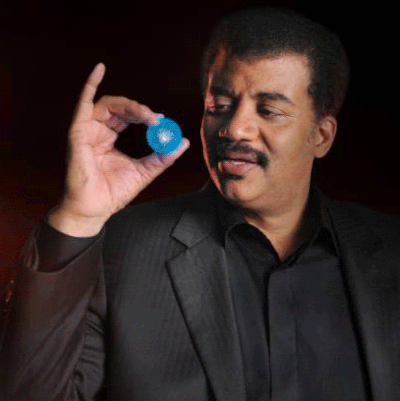
In Cosmos: A Spacetime Odyssey, Neil DeGrasse Tyson proves that not all TV CGI is inherently cheesy. Throughout the series’ first five episodes, he acts as a modern-day Ms. Frizzle — zooming around the galaxy in his “Ship of Imagination,” a WALL-E-inspired vehicle that has the magical properties of an upgraded Magic School Bus and serves as an update on Carl Sagan’s original “Ship of Imagination.” Cosmos will likely soon find its way into the middle school canon, and hopefully the young people of America will find DeGrasse Tyson as charming as I do. Here’s my evidence:
In episode one, he actually causes the Big Bang. He creates all of life while wearing some really cool sunglasses.
Do you love your pet dog? Thank Neil. In episode two, he fought off a wolf (à la Liam Neeson in The Grey), therefore taming it, furthermore creating dogs (with a little help from evolution, or whatever).
Also in episode two, DeGrasse Tyson takes his Ship of Imagination on a Magic School Bus–inspired deep dive into the body of a bear. Why? Because he wants you to be able to see things on a rad molecular level, man.
Was the bear a bit much? Well, you vegetarians can travel into a leaf instead.
Episode three opens with DeGrasse Tyson cradling a space baby in space … Or just a baby in space? Anything’s actually possible.
Later, he comes so close to fondling Halley’s Comet. Touch it, Neil. You know you want to.
(Not exactly sure what’s happening here, but it’s a world of wonderful.)
Soundgarden just broke up (again), realizing that they became the second most important black hole resource in pop culture.
Here, in this week’s episode, DeGrasse Tyson is explaining something about digital sound waves. It’s super trippy.
God bless you, Neil DeGrasse Tyson, and God bless Cosmo’s CGI budget.

